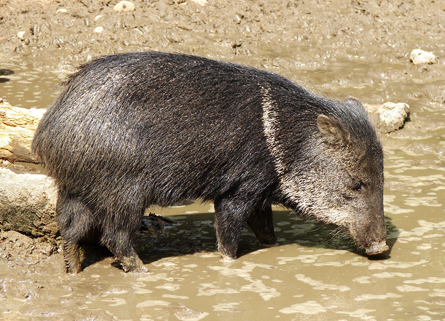When to welcome ‘invading’ species
Climate refugees challenge environmental distinctions between friend and foe
Glacier National Park, Montana — As climate changes, some environments are becoming hostile to the flora and fauna that long nurtured them. Species that can migrate have begun to move into regions where temperatures and humidity are more hospitable. And that can prove a conundrum for officials charged with halting the invasion of non-native species, notes Jon Jarvis, a biologist who for the past year has headed the National Park Service.

One problem: What’s native? Species move at will as conditions change. What’s native in one century may be gone five generations later. Newly arrived species, meanwhile, may be environmental refugees.
“Policies that are currently in place view those [immigrants] as exotics,” Jarvis says — invading homesteaders that should, at all costs, be evicted. But such species may be on the move simply “because this is their last refuge,” he points out. “So we have to rethink that policy and how we respond to new species that are coming into our parks.”
Each new immigrant has the potential to radically change the neighborhood — welcoming an influx of new predators and parasites, altering soil nutrients and porosity, even changing the amount of moisture and sunlight that reaches ground dwellers. And most of these changes can’t be fully anticipated in advance.
Bottom line: With these migrations “we are going to be faced with very fundamental, difficult questions,” Jarvis notes: Are the new arrivals weeds or endangered species to be welcomed with open arms.
One example — peccaries.
Jarvis was driving down the southern rim of Grand Canyon National Park, a few months ago, when a group of piglike peccaries — also known as javelinas — crossed the road in front of him. The park’s superintendent volunteered to Jarvis that “javelinas didn’t used to be here.” Although an American native, these animals are moving into novel, more northerly locations, Jarvis observes. “And I think this is going to be true for a lot of species.”
There is even talk, he says, about whether to help resettle some species into what for them will be novel sites. It may be the only way to ensure that threatened species survive into the next century, Jarvis told several dozen reporters who were touring Glacier National Park earlier this month.
For instance, much as they might like to, giant sequoias are not going to migrate. They have been literally rooted to their current ecosystem for millennia. Today, he notes, “they are as iconic to the Sierras as glaciers are to Glacier [National Park].” But the sequoias are feeling the heat and not liking it.
So, he asks: “Are we, as a society, to move them — going to plant them in the Cascades?” Actually, he acknowledges, “We’re not quite ready to answer such questions. But we’re beginning to have to face them.”
See also GNP’s glaciers: going, going . . .







